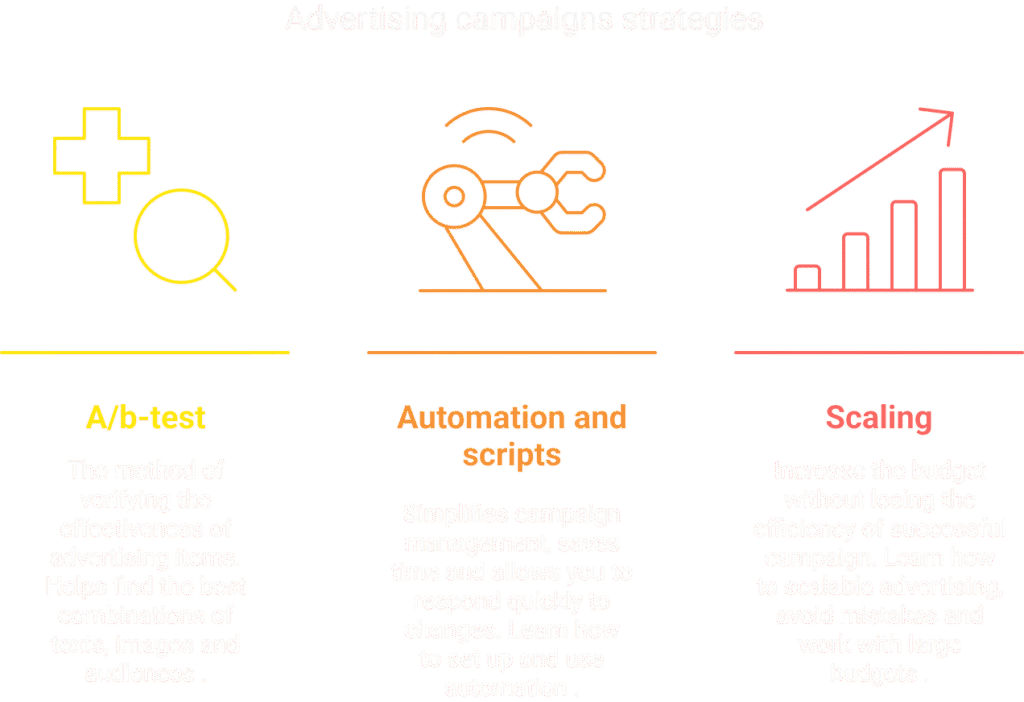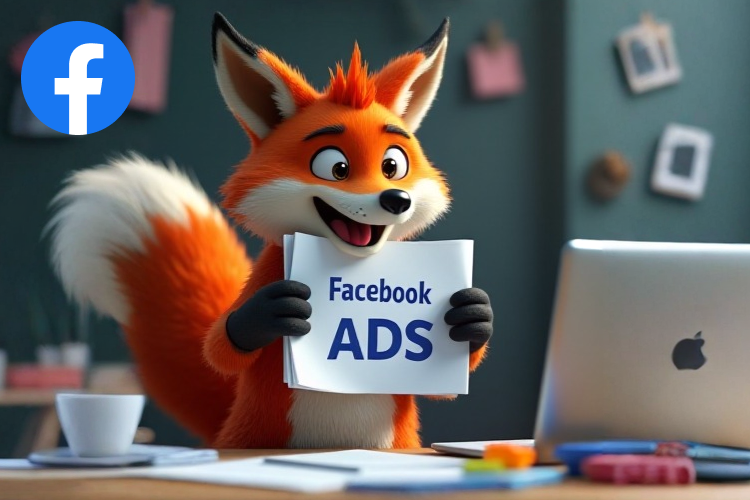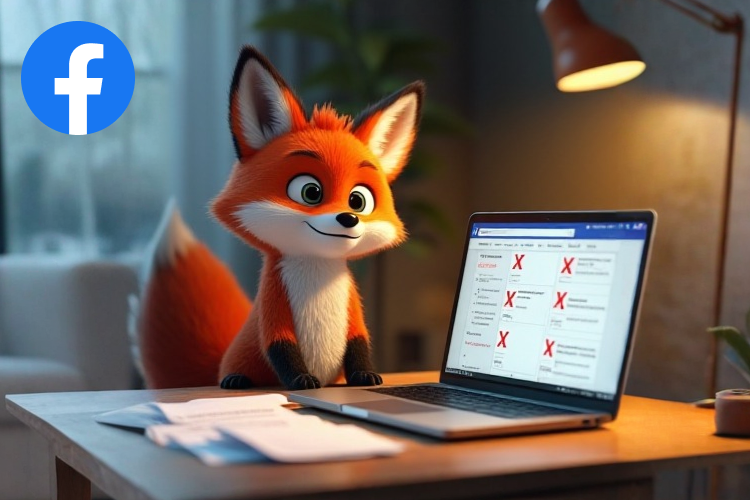Advanced Facebook Advertising Strategies

- Using A/B testing to improve performance
- What is A/B testing?
- How to conduct A/B testing
- Tips for successful A/B testing
- Using automation and scripts in advertising
- What is automation in Facebook advertising?
- Benefits of automation in Facebook advertising
- Examples of automation in Facebook advertising
- How to start using automation and scripts
- Challenges and limitations of automation
- Scaling strategies for big budgets
- What does scaling campaigns mean?
- Scaling strategies
- Scaling challenges
Facebook advertising is not just about setting up campaigns and running ads. Once you reach a certain level, you’ll be faced with an important question: how do you improve results, reduce costs, and scale successful campaigns? This is where advanced strategies come into play to maximize your effectiveness.
In this guide, we will look at three key areas that will help you work with Facebook advertising on a more professional level:
- A/B testing is a powerful method for testing the effectiveness of advertising elements, helping you find the best combinations of text, images, and audiences. We’ll look at how to conduct testing correctly and what nuances to consider.
- Automation and scripts — they greatly simplify campaign management, save time, and allow you to respond faster to changes in advertising performance. We’ll tell you how to set up automation and use it in your strategies.
- Scaling – Once you find an effective campaign, it’s important to be able to increase your budget without losing performance. We’ll look at how to properly scale your ads, avoid mistakes, and work with large budgets.

This guide will be useful for experienced advertisers who want to deepen their knowledge and get more consistent and predictable results from Facebook advertising. Ready to dive into advanced methods? Then let’s get started!
1. Using A/B testing to improve performance
A/B testing is an integral part of advanced Facebook advertising strategies. This method allows advertisers to compare two or more versions of their ads to determine which one performs better. Incorporating A/B testing into your advertising strategy not only helps improve performance, but also ensures a return on investment.
What is A/B testing?
A/B testing is an experimental approach that allows you to test two or more variations of an ad, changing one or more factors to understand how the changes affect results.
Quote:“A/B testing is the easiest way to find the perfect approach to your audience, without guesswork and unnecessary risks.”
How to conduct A/B testing
1. Defining the purpose of the test
Before you start testing, you need to clearly define what goal you want to achieve. This could be increasing clicks, reducing cost per conversion, or improving ad engagement.
Example:If your goal is to reduce your cost-per-click (CPC), it’s worth testing different creatives or ad texts to see which one delivers the best results.
2. Selecting items for testing
Choose the specific elements you will test. These could be:
- Headlines
- Image or video
- Calls to action (CTAs)
- Audience
- Ad placement (e.g., newsfeed or stories)
“Choose one item to test at a time to know exactly which factor influenced the result.”
3. Creating ad variations
Create multiple ad variations with different elements. For example, if you’re testing images, prepare two versions of the ad with different visuals.
4. Setting up a test in Facebook Ads Manager
Facebook Ads Manager has a built-in A/B testing tool that helps you set up your test. You can choose traffic distribution criteria, test duration, and other parameters.
Example:You can set up a test for 7 days to collect enough data to make an informed decision.
5. Analysis of results
Once you’ve completed your test, analyze the results. Pay attention to key metrics like CTR, CPC, and conversions. Determine which variant performed best and use it in future campaigns.
Tips for successful A/B testing
- Don’t test too many items at once. This can make it difficult to analyze the results.
- Use a sufficient budget. Testing on too small a budget may not yield statistically significant results.
- Be consistent. Regular testing helps you continually improve your advertising campaigns.
“A/B testing is a process that takes time and patience. But the results are worth it.”
A/B testing is a powerful tool that allows you to identify the most effective approaches to advertising on Facebook. With a systematic approach to testing, you can significantly improve the effectiveness of your campaigns, optimize costs, and achieve better results.
2. Using automation and scripts in advertising
Modern digital marketing demands adaptability, speed, and efficiency from advertisers. One way to achieve these goals is to implement automation and scripting in Facebook ads. These methods allow you to automate routine tasks, reduce human error, and optimize campaign management.
What is automation in Facebook advertising?
Automation is the use of tools and technology to perform certain tasks without the need for constant manual intervention. In the context of Facebook advertising, this can include the automatic creation, management, and optimization of ad campaigns.
“Automation allows marketers to focus on strategy and creativity, leaving the routine work to algorithms.”
Benefits of automation in Facebook advertising
- Save time: Automation frees up time for more strategic tasks, reducing the need for manual campaign management.
- Error Reduction: Automated processes minimize the risk of human error.
- Rapid adaptation: Automated tools can quickly respond to changes in ad performance, optimizing it in real time.
Examples of automation in Facebook advertising
1. Using automated rules
Facebook Ads Manager allows you to create automated rules that are executed under certain conditions. For example:
- Campaign pause: You can set up a rule that will pause a campaign if the cost per conversion exceeds a certain threshold.
- Increase budget: If your campaign exceeds your expected CTR, you can automatically increase your budget.
Example:Imagine you have a campaign that performs well on weekends. You can set up a rule that automatically increases the budget on Saturday and Sunday.
2. Using scripts to manage campaigns
Scripts provide more flexibility in managing your campaigns. In particular, you can create scripts to automatically create new ads based on certain data or for reporting.
“Scripts can make your work more productive by allowing you to automate even the most complex tasks.”
How to start using automation and scripts
1. Choosing automation tools
There are many third-party tools that can help automate processes in Facebook advertising, such as Zapier, Make, or Facebook’s internal solutions like the Ads API.
2. Setting up automated rules
To set up automated rules in Facebook Ads Manager, follow these steps:
- Open your advertising account and go to the “Automated Rules” section.
- Select the campaign for which you want to create a rule.
- Configure the rule execution conditions, actions, and check frequency.
3. Writing and implementing scripts
For more complex tasks, you may need to write scripts. This requires some programming knowledge, but provides significant flexibility. Scripts can be written in various programming languages, such as Python, JavaScript, or use specialized platforms.
Example:You can write a script that checks the performance of your ads every day and sends a report to your email.
Challenges and limitations of automation
While automation can make work much easier, there are certain challenges:
- Lack of flexibility: Not all tasks can be automated, and some situations require human intervention.
- Cost: Some automation tools can be expensive, making them less affordable for small businesses.
- Training Need: Using automation requires a certain level of technical knowledge.
“Automation is a powerful tool, but it will never replace human creativity and strategic thinking.”
Automation and scripts in Facebook ads open up new opportunities for marketers. They help reduce routine work, optimize processes, and focus on more important aspects – such as creative creation and strategic planning. However, it is important to remember that automation is just a tool that must work in unison with human expertise and creativity.
3. Scaling strategies for big budgets
Scaling your Facebook ad campaigns is an art that requires not only increasing your budget, but also careful planning and optimization. As you move to larger budgets, it’s important to know how to effectively scale your campaigns to maximize results without losing profitability.
What does campaign scaling mean?
Scaling is the process of expanding the scope of an advertising campaign to reach a larger audience and increase conversions. Scaling can be done by increasing budget, expanding geographic reach, or increasing the number of audiences targeted by advertising.
“Scaling is more than just increasing your budget. It’s a strategic approach to growing your business.”
Scaling strategies

1. Vertical scaling
Vertical scaling involves gradually increasing your budget for a successful campaign. This is the most common way to scale, but it requires caution to avoid breaking Facebook’s optimization algorithm.
Tips for vertical scaling:
- Increase your budget gradually: Facebook recommends increasing your budget by no more than 20-30% at a time to avoid disrupting the stability of your campaign.
- Track your metrics: It’s important to monitor key metrics (CTR, CPA, ROAS) after each budget increase to ensure that your campaign remains effective.
Example:If your campaign is delivering consistent results with a budget of $500 per day, start increasing it to $600 and observe the changes in performance.
2. Horizontal scaling
Horizontal scaling is the creation of new campaigns or ad sets with different creatives, targeting, or audiences. This helps you avoid reliance on a single campaign and reduces the risk of audience saturation.
Tips for horizontal scaling:
- Test new audiences: Try to reach new market segments that may be interested in your product.
- Use different ad formats: Changing formats (video, carousel, slideshow) can help attract new audiences.
- Create new creatives: Regularly updating your creatives helps keep your audience interested and avoid ad fatigue.
“Horizontal scaling is about diversifying and finding new opportunities for growth.”
3. Using events and seasonal campaigns
Seasonal campaigns and marketing promotions can be a powerful tool for scaling. During holidays or important events, consumers are often willing to spend more, creating the perfect conditions for increasing budgets.
Tips for using seasonal campaigns:
- Plan ahead: Start preparing for seasonal campaigns a few months before the event to allow enough time for testing.
- Create unique offers: During the holidays, consumers are looking for special offers. Use this to create attractive promotions.
- Use remarketing: Engage with audiences who have already interacted with your brand but haven’t yet made a purchase.
Example:During Black Friday, you can run special promotional campaigns with limited offers to attract more customers.
4. Using automation tools
To scale effectively, it’s important to have tools that can automatically optimize your campaigns. Facebook offers several tools, such as automated rules and automated bidding, that help you maintain efficiency as your budget increases.
Tips for using automation:
- Set up automated rules: For example, you can create a rule that increases budget for successful campaigns or stops those that don’t meet KPIs.
- Use automatic bidding: This allows Facebook’s algorithm to automatically adjust your bids to achieve maximum results.
Scaling challenges
Scaling large budgets can bring significant results, but it also comes with certain challenges:
- Increased competition: An increase in budget can lead to you competing with larger players in the market.
- Risk of audience saturation: If you show the same ads to the same audience too often, it can reduce performance.
- Optimization issues: Large budgets can lead to quick campaign burnout if they are not optimized properly.
“Scaling is a balance between growth and stability. It’s important not only to increase the budget, but also to maintain the quality of advertising campaigns.”
Scaling Facebook ads for large budgets is a complex but exciting process. It requires careful planning, constant monitoring, and a willingness to adapt to changes. The right combination of vertical and horizontal scaling, seasonal campaigns, and automation tools will help you achieve the results you want. But most importantly, remember that scaling should be gradual and well-founded to ensure sustainable growth for your business.



